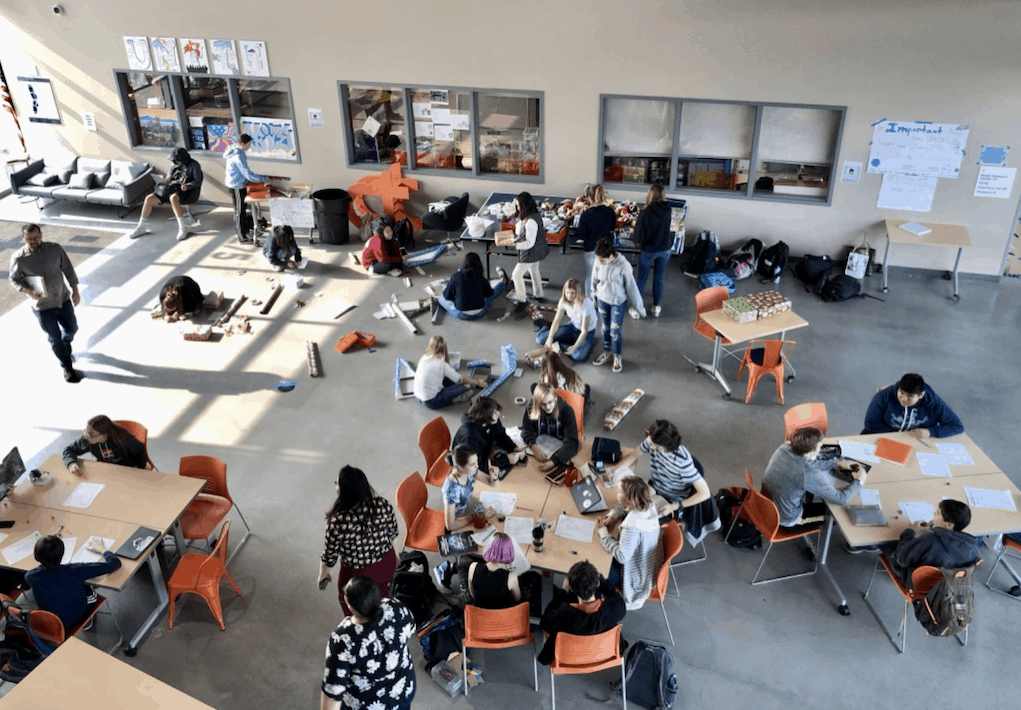New School Formula: Harder Problems and Fewer Answers

The Information Age ushered in new tools that changed life and work for people around the world. Over four decades, businesses and public services began to take advantage of the information processing power of computers.
The last ten years of the Information Age included the rise of mobile devices and sensors, fast processing and cheap storage. The data explosion set the stage for artificial intelligence–code that learns.
Over the last two years, artificial intelligence (AI) has quietly become ubiquitous in every aspect of life. It curates the screens we watch, detects disease, boosts agricultural outcomes, and helps determine if we get a loan or go to jail.
Code that learns will prove to be humankind’s greatest invention. It will help cure disease, create clean energy, and produce cheaper, safer transportation. It will also displace jobs, concentrate wealth, and create new existential risks. AI will have more influence on the lives and livelihoods of young people over the next several decades than any other factor.
Priority Outcomes. This year’s first graders are the class of 2030. Those graduates will live in a very different world with new challenges and opportunities. We owe it to them to discuss what graduates should know and be able to do.
After 25 years of focusing on basic literacies, there is a broad movement to expand the definition of success to career and citizenship readiness. In the last few years, a number of outcome frameworks have been introduced that value success skills.
Two developmental priorities identified by the New Tech Network (NTN) are agency and collaboration. NTN defines agency as a mindset and learning habits:
- Growth Mindset: use effort and practice to grow, seek challenge, grow from setbacks, build confidence, find personal relevance
- Take Ownership Over One’s Learning: meet benchmarks, seek feedback, tackle and monitor learning, actively participate, build relationships, impact self and community
Next Generation Learning Challenges’ MyWays outcomes framework includes dimensions of agency in Habits of Success (academic behaviors, positive mindsets, self-direction and perseverance, and learning strategies) and Wayfinding Abilities (identify opportunities and set goals, find needed help and resources, and navigate each step of the journey)
The NTN collaboration rubric includes equal participation, project management, making decisions, physical disposition, creating and using norms, intellectual discourse, passionate ownership, and conflict resolution. MyWays includes many of these skills in Creative Know How.
XQ Learner Goals incorporate agency primarily in Learners for Life and collaboration in Generous Collaborators (self-aware team members, essential co-creators, and inquisitive world citizens).
Agency and collaboration are the opposite dispositions of routine and compliance–the foundational principles of the schools we inherited. If we take these 21st-century priorities seriously, they require a different learner experience.
Learner Experience: Key to Priority Outcomes
Most young people are going to lead lives full of novelty and complexity in an innovation economy powered by exponential technology and entrepreneurship. The majority of working adults will soon be freelancers but they’ll often be delivering value as members of diverse distributed teams. The level of opportunity to contribute is unprecedented–as is the challenge and disruption posed by colliding systems.
To contribute now and in the future, young people deserve extended challenges–long projects that take on tough problems. To build agency and collaboration, students and teachers can co-construct projects that cross disciplines and result in public products that make real contributions.
Traditional teaching asks students to learn because the teacher said to. Project-based learning brings students into contact with new concepts and skills through a problem, context, or scenario that makes those new ideas worth knowing.
Short teacher-directed projects can be useful at achieving specific outcomes, but big integrated challenges boost student agency, communication, and pathfinding to encounter new situations. Projects with no right answers develop design skills, they require research, empathy, and prototyped solutions. Extended projects also teach collaboration and project management.
Extended challenges allow students to take on local versions of some of the most important issues in the world such as poverty, clean water, sustainable agriculture, and the safe use of artificial intelligence. Students at schools where extended challenges are core to their learning progressions often start with a topic of high-interest and high-need that is right in their backyard and then seek ways to apply that knowledge or understanding on a global scale.
To develop confident and capable young people, we need to encourage more messy work–harder problems and fewer answers.
For more, see:
- Project-Based Learning Connects Real World With Deep Impact
- Attacking Complexity with Confidence
- Teaching Design Thinking to Hack School and Prep for Complexity
Stay in-the-know with innovations in learning by signing up for the weekly Smart Update. This post includes mentions of a Getting Smart partner. For a full list of partners, affiliate organizations and all other disclosures please see our Partner page.
This post was originally published on Forbes.







0 Comments
Leave a Comment
Your email address will not be published. All fields are required.